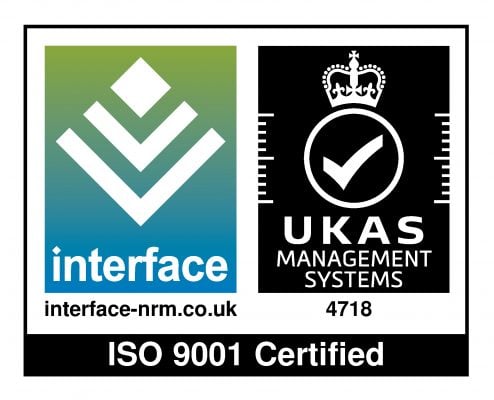Professional development trends; are they just passing fads or are they a powerful indicator of the direction that careers, L&D, and the working world are heading? We often discuss key L&D trends that our readers should be aware of, along with sharing practical advice on how to implement them into your strategy, but it’s also important to evaluate why these trends are emerging, what they signify, and how they’ll impact the future of work. Join us as we discuss exactly that – let’s dive in!
What are the top professional development trends companies should be focusing on today?
- Lifelong learning and continuous development – The idea of this is for employees to embark on a long-term pursuit of knowledge and skills that will support their professional development and career growth.
- Personalisation – The buzzword we’re all familiar with and the essential practice that all L&D teams should be applying to professional development opportunities. Personalisation is all about tailoring L&D to cater to an individual’s skillset, professional goals and learning preferences.
- Professional agility – This professional development trend is more important than ever as new technologies continue to disrupt traditional job expectations and skill requirements. To keep up with these changes, professionals need to be willing to learn new skills and adapt accordingly.
- AI skills development – It will come as no surprise that one of the hottest professional development trends today is all about providing employees with the skills they need to use AI tools effectively and responsibly at work.
- Soft skills development – As the need for AI skills grows, so does the demand for soft skills. Find out why in our soft skills blog here.
- Self-directed development opportunities – This professional development trend focuses on autonomous L&D. This is a chance for employees to take control of their development by outlining their own goals and objectives, while ultimately working with employers to achieve them.
- Data-driven development opportunities – Data-driven insights are the key to facilitating meaningful professional development opportunities that have a lasting impact on job performance and career growth.

Now that we’ve outlined some professional development trends that you should consider focusing on, let’s explore what these trends are telling us about the future of the working world and the impact this will have on your L&D strategy.
The impact of AI
As AI becomes more integrated into the working world, the future of work will be all about AI skills and competency. As with any new software, tools, or technology, employees can only be expected to use them effectively and responsibly with the right training. The secret to gaining a competitive advantage in the future world of AI-driven business is to invest in AI-focused professional development opportunities now. This is a trend that’s absolutely worth jumping on if you’re looking to leverage AI tools going forward.
But if the future is all about AI and a tech-focused working landscape, why is soft skills development also a key professional development trend today?
AI is transforming the way we work by automating tasks and processing data in a mere instant, however, it can’t replace emotional intelligence and human soft skills. To leverage AI tech to its fullest potential in the future, employers need to invest in AI literacy and skills development alongside soft skills development.
Find out more about this by reading our soft skills-focused blog here.
Investing in long-term career development
The adoption of new technology, particularly AI tools, has already had an impact on job roles and career expectations. Many professionals are grappling with fears around AI-driven job displacement. However, adapting to the tech-focused working world simply requires employees to be more agile, flexible and ready to adapt to any changes to job roles, demands and skills.
Lifelong learning, self-directed development and professional agility are key professional development trends that will support professionals during any changes brought forward by AI technology in the future. By widening skillsets and increasing knowledge bases, engaging in these development practices makes it easier for professionals to adapt to change and achieve career longevity as a result.

Using technology to level up development opportunities
We’ve explored how employers and professionals can prepare for a tech-focused future working world, but what about gaining a competitive edge now by leveraging tech today?
Two of the professional development trends outlined above rely on powerful L&D technology to drive real results; personalisation and data-driven development opportunities. To jump on these trends, you’ll need e-learning tools and tech that allow you to take a deep dive into L&D data and apply it when creating personalised and meaningful development opportunities.
Find out everything you need to know about personalisation here or discover the hidden power of reports and analytics for creating data-driven development here.
Challenges of implementing these professional development trends
While these professional development trends are the key to levelling up your L&D today and in the future, they don’t come without their challenges.
- Budget constraints – Personalisation, broad skills development, and rapid deployment of the latest L&D content to keep up with changing role requirements can all be costly
- Lack of focus – It’s no surprise that you can’t simply jump on all the trends we outlined above and expect to yield maximum results, nor can you expect employees to engage in all of them
- Time limitations – Implementing new professional development strategies can put a strain on busy professionals with busy schedules
Our tips for overcoming these challenges and leveraging these trends to optimise the future of your L&D:
- Invest in e-learning solutions that will deliver a strong ROI. With a solution such as our Totara Learn LMS, you can take advantage of a broad range of powerful functionality, capable of facilitating the implementation of all the trends outlined above
- Choose wisely. Assess which trends will best serve the needs of your employees and the wider organisation. Listen to your employees and ask them which trends they would like to take advantage of. Including your employees in the strategy-building process can significantly boost job satisfaction and retention, particularly for employees looking for job security in a rapidly changing working environment.
- Tackling time limitations is easy with the right content and strategy. When designing your development activities, focus on incorporating blended learning, microlearning, and motivators such as gamified content to drive L&D engagement.
Invest in the future of your L&D now
With a better understanding of the value of today’s key professional development trends, now it’s time to build them into your core business strategy.
Need help getting started? Looking for the right tools and tech to support your strategy? We’ve got you covered. Get in touch with us today to discover our powerful, award-winning Totara and Moodle e-learning platforms.
.png)
View our range of webinars
From AI and HR best practices to bespoke content design and the power of e-learning. Explore our range of completely free webinar recordings.
.png?width=1080&height=150&name=Slim%20blog%20CTAs%20(26).png)
.png?width=1080&height=150&name=Slim%20blog%20CTAs%20(22).png)
.png?width=1080&height=150&name=Slim%20blog%20CTAs%20(12).png)



